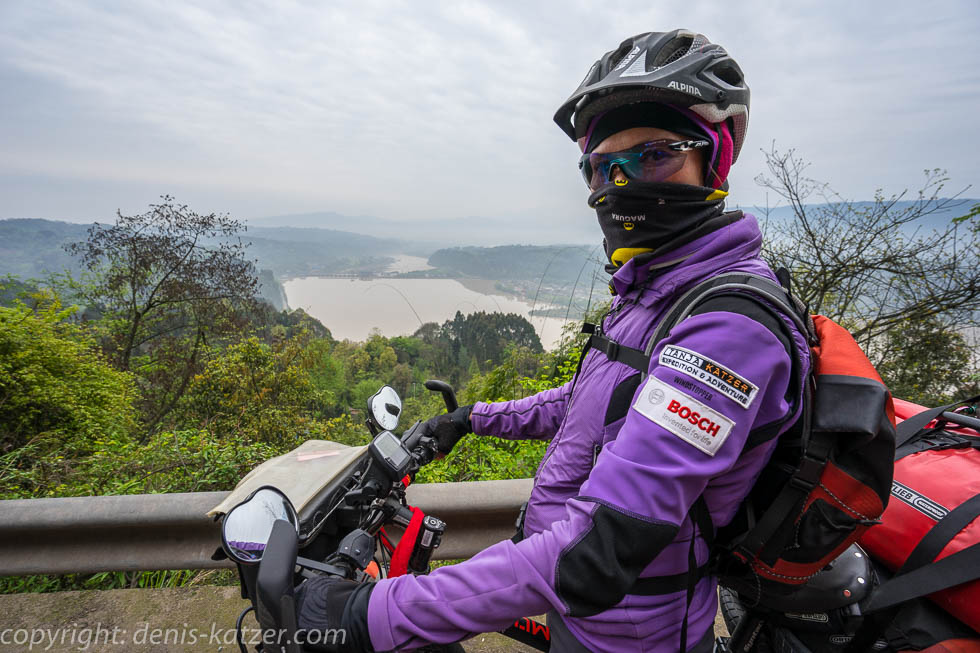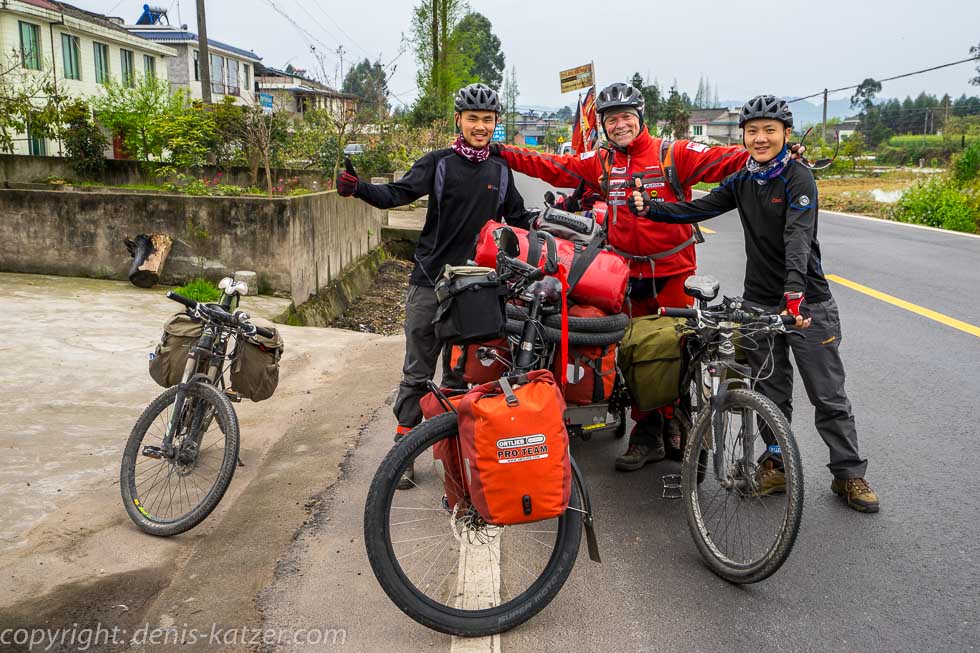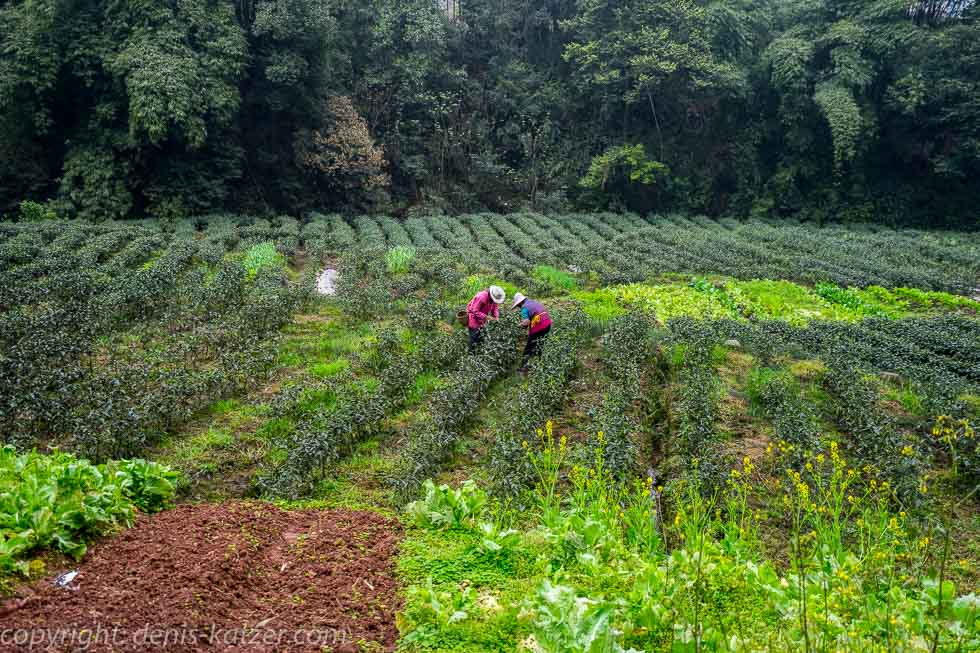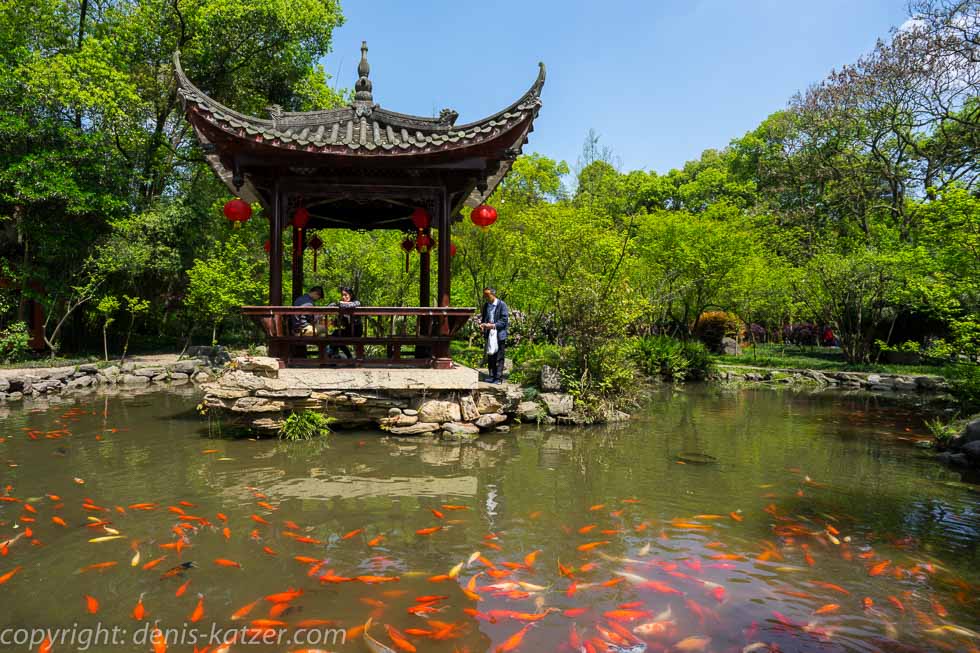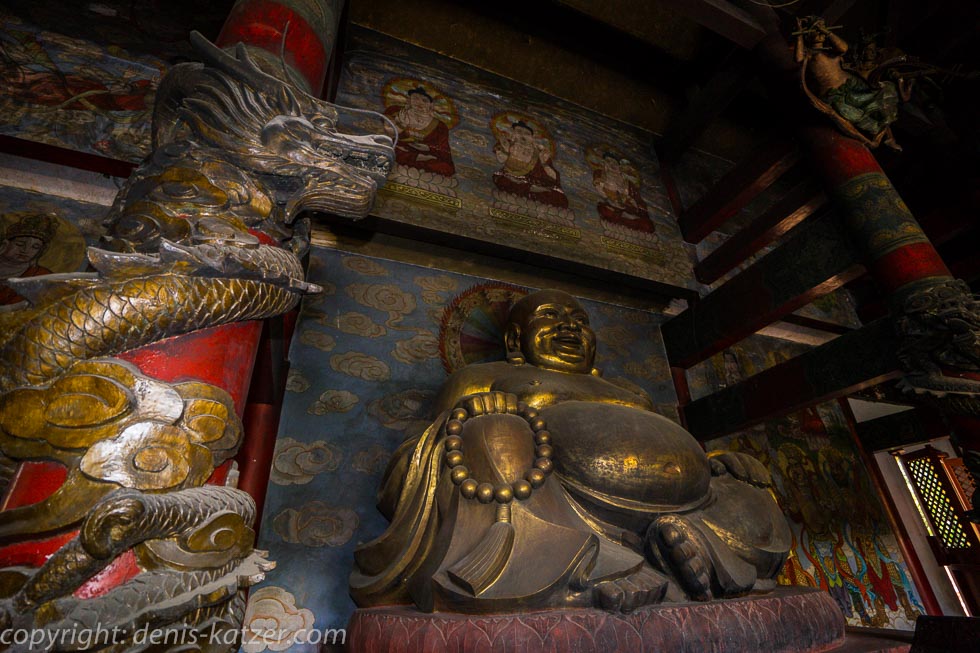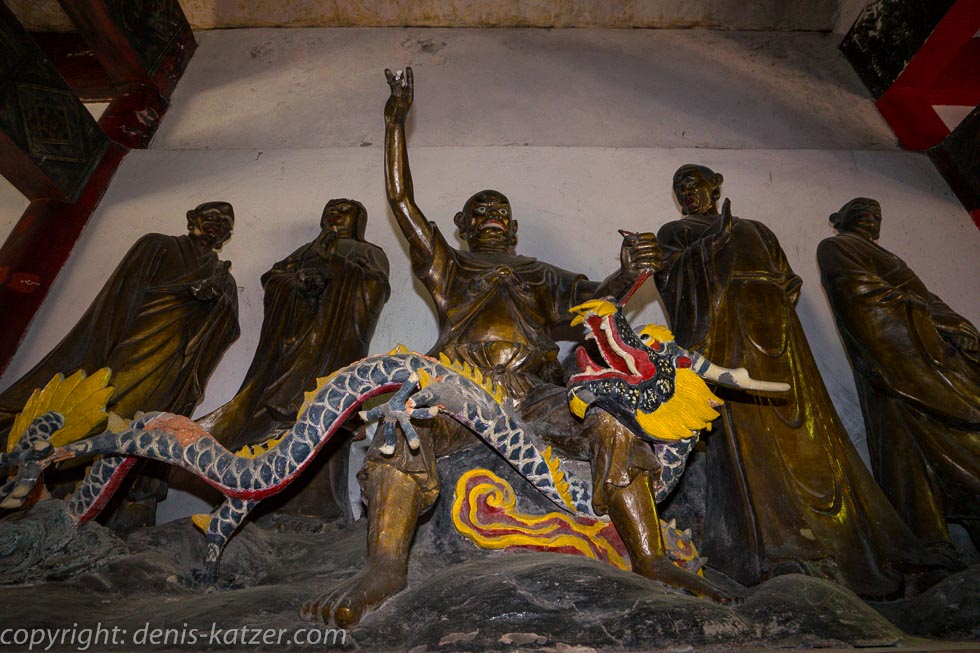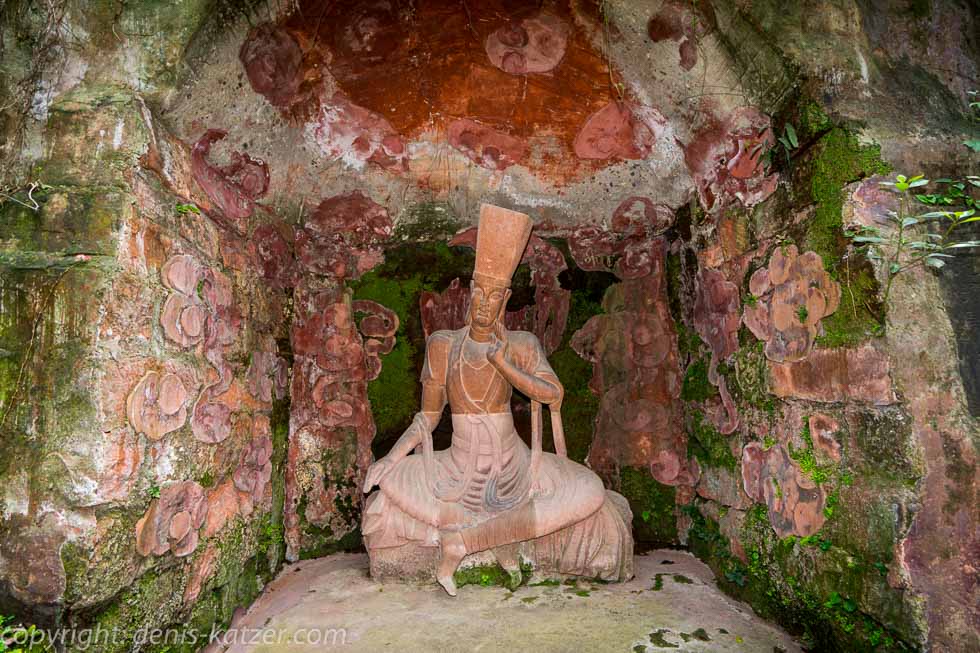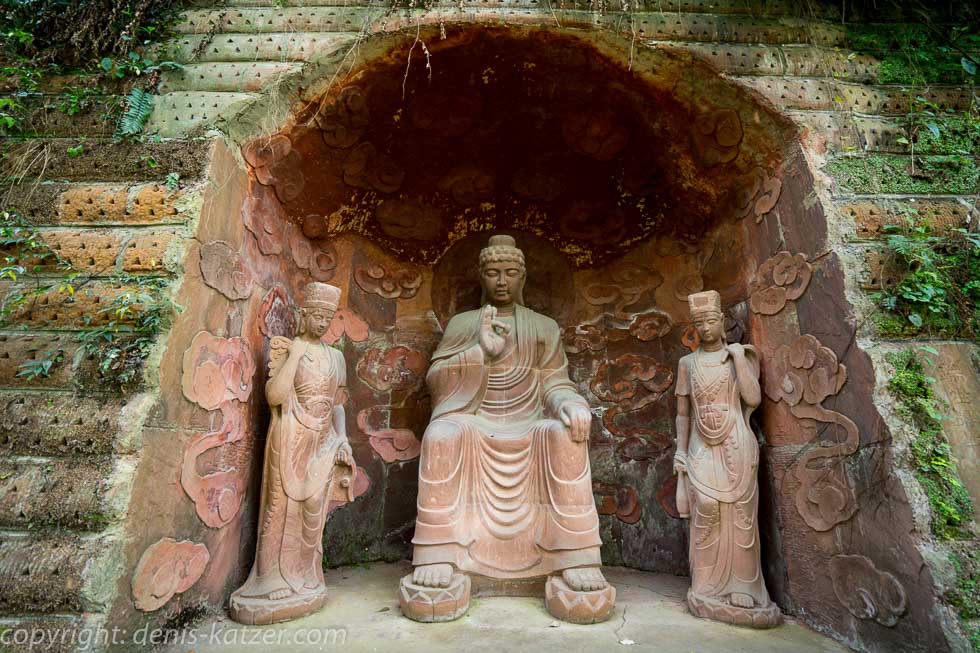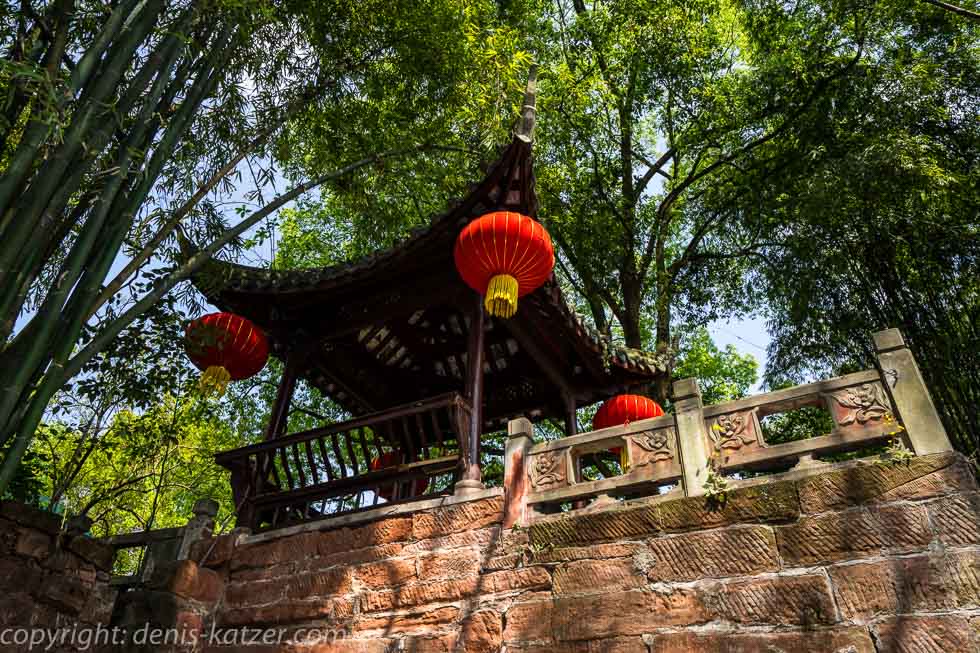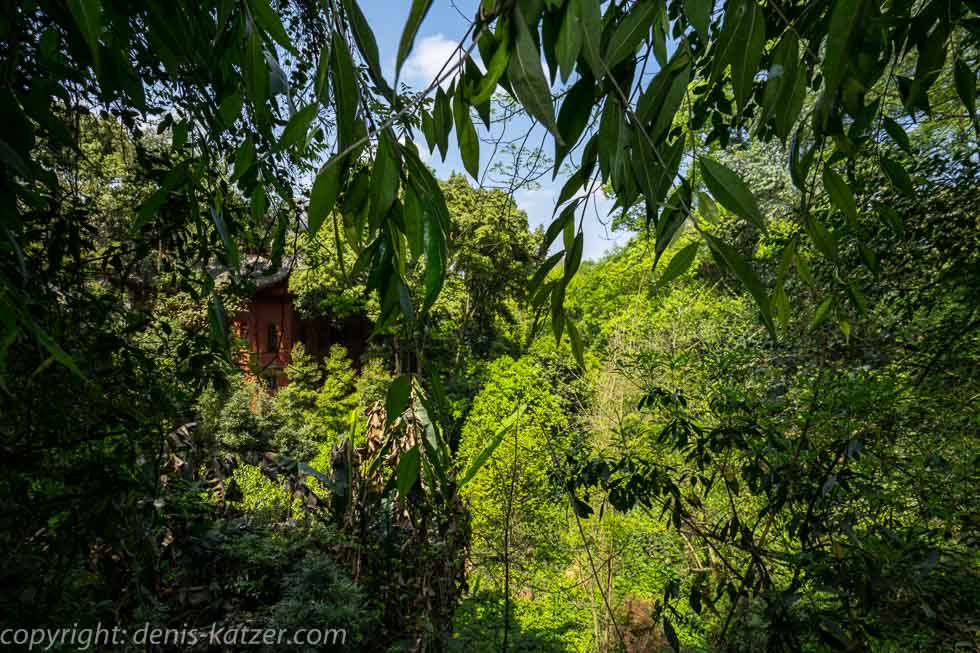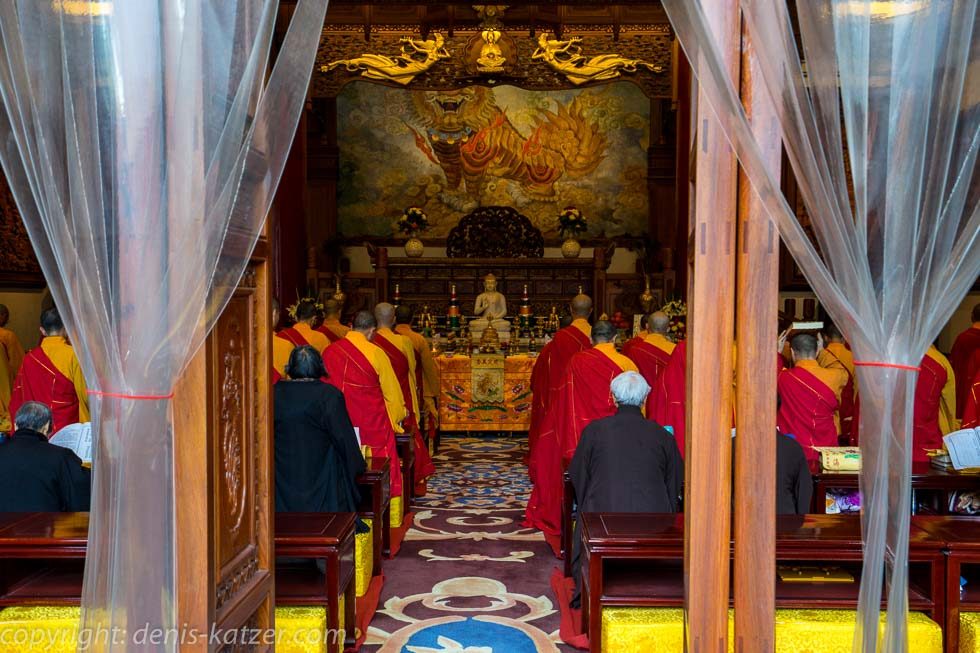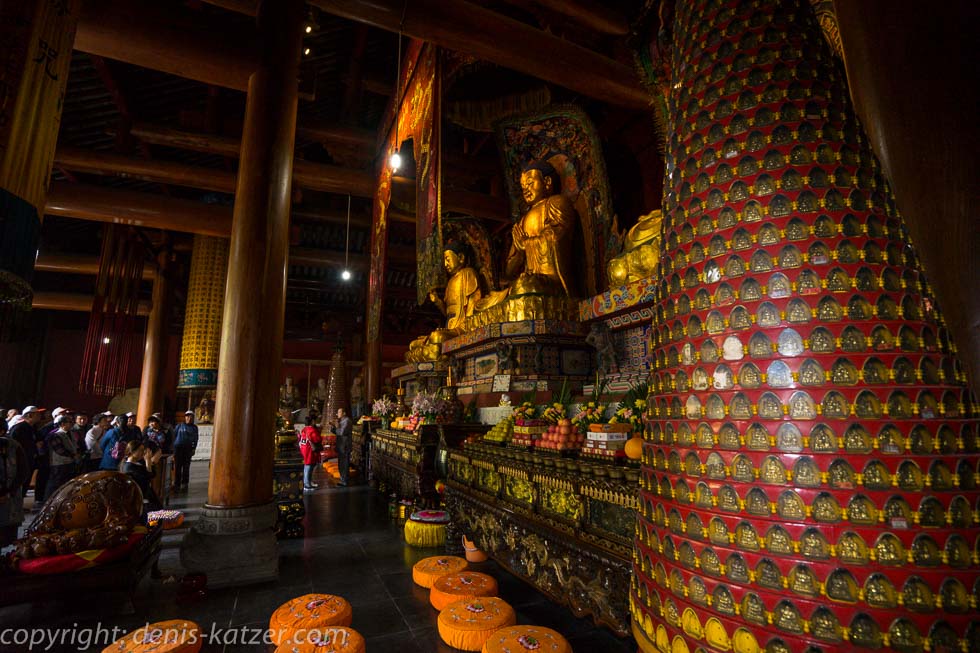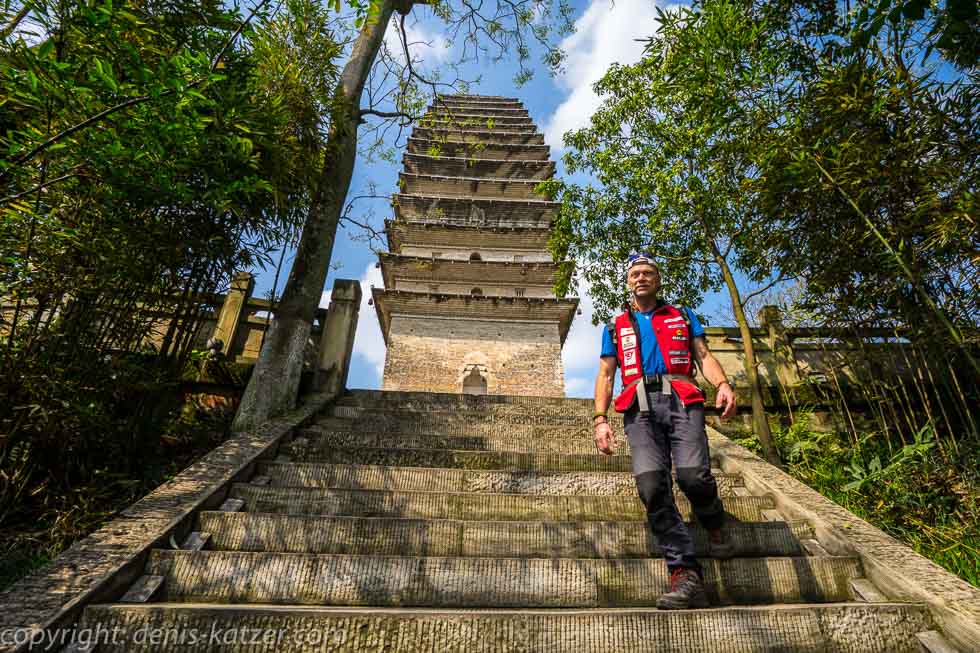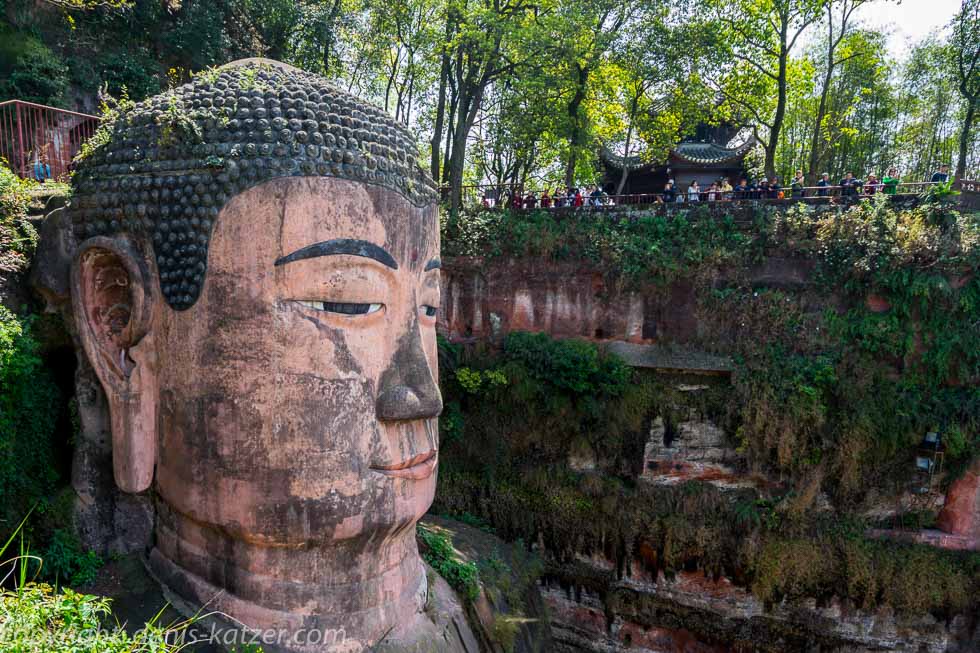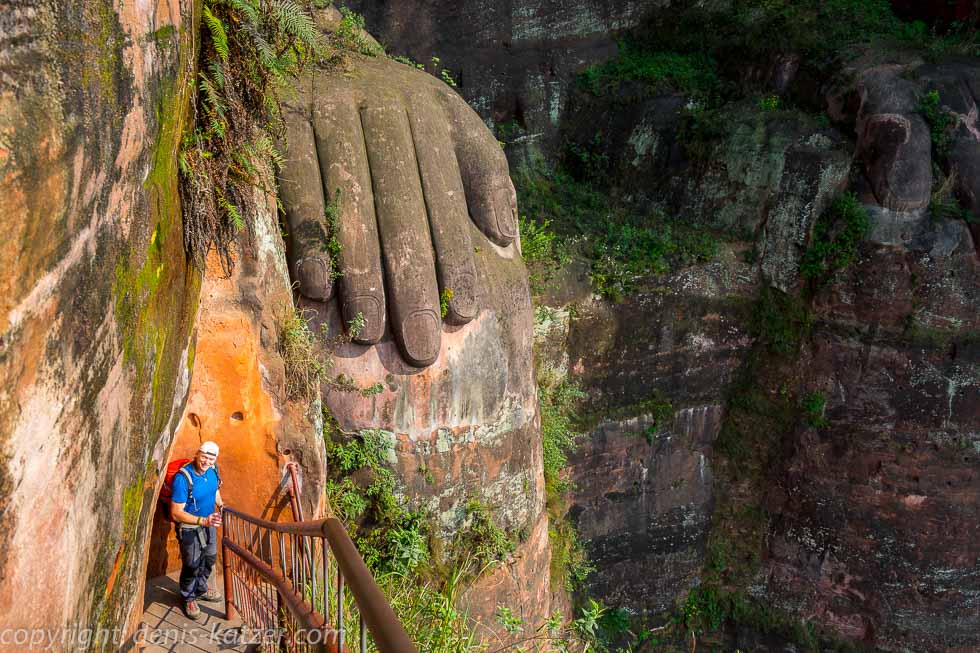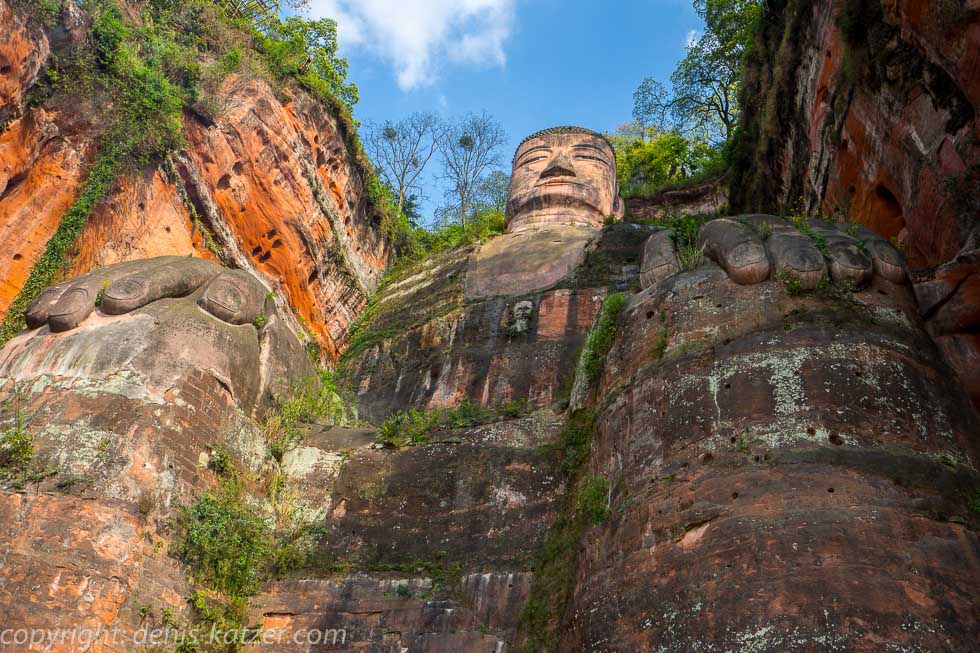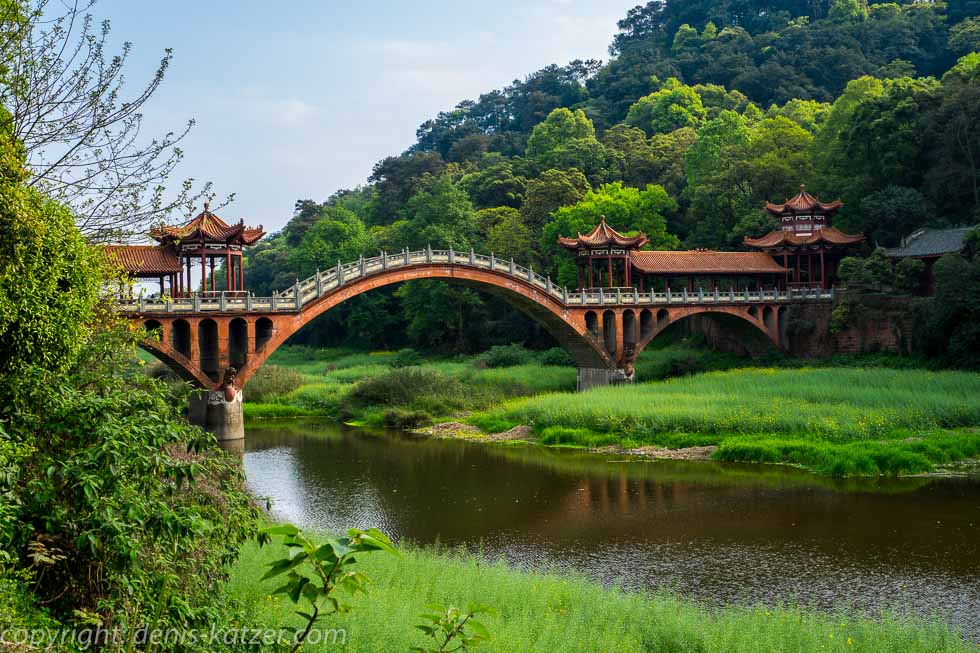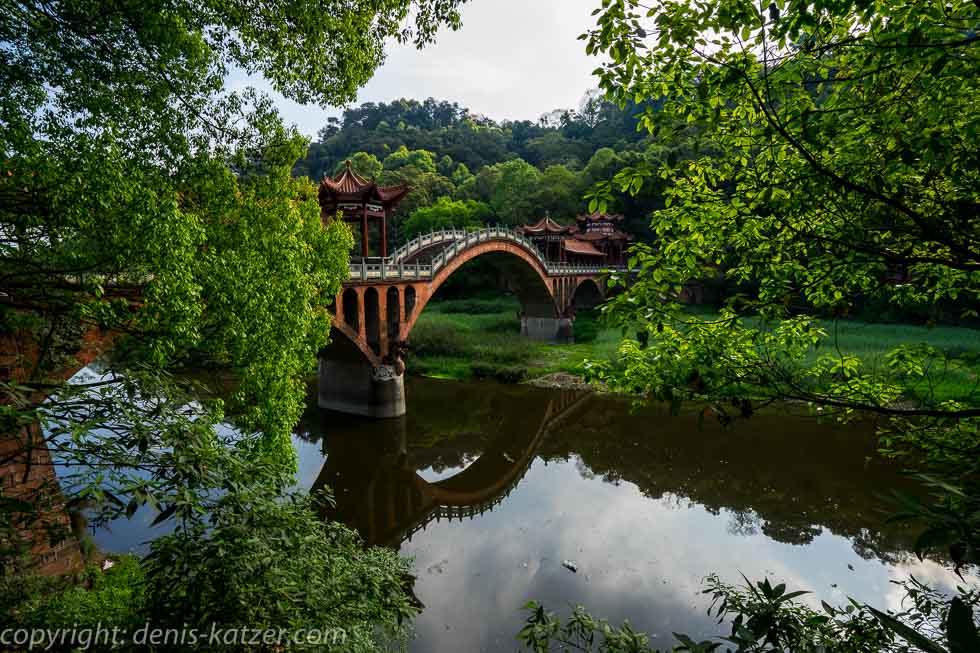
Largest Buddha statue in the world
N 29°35'48.7'' E 103°43'57.3''
Date:
27.03.2016 until 30.03.2016
Day: 273 – 276
Country:
China
Province:
Sichuan
Location:
Leshan
Latitude N:
29°35’48.7”
Longitude E:
103°43’57.3”
Daily kilometers:
130 km
Total kilometers:
16.104 km
As the crow flies:
89.01 km
Average speed:
21.8 km/h
Maximum speed:
57.4 km/h
Travel time:
5:54 hrs.
Soil condition:
Asphalt
Maximum height:
1.150 m
Total altitude meters:
27.372 m
Altitude meters for the day:
808 m
Sunrise:
07:01 am – 07:00 am
Sunset:
7:20 pm
Temperature day max:
16°C
Temperature day min:
12°C
Departure:
08:30 a.m.
Arrival time:
4:30 pm
(Photos of the diary entry can be found at the end of the text).
Although we really like the mountains covered in bamboo forest, we are glad to leave the region after five days of constant rain. Heavy rain clouds herald the next shower as we let our bikes hurtle down the pass through a deep gorge where a river, browned by floods, plunges into the valley beside the narrow road. After 22 km we leave the city of Ya’an on the right, which is also known as the rainy city with 180 rainy days a year. Although we wanted to continue west from here to explore the Tibetan province of Garze by e-bike, we changed our minds at short notice. The reason for our renewed detour is the largest Buddha statue in the world, which was carved out of the rock by Buddhist monks between the years 719 and 803. “I really want to see them,” said Tanja. So we head southeast from here and then cross back to the southwest. As soon as Ya’an is behind us, the mountains become flatter, which is why we make good progress. We meet Chinese long-distance cyclists, take a few photos of each other and stop after 30 kilometers to swap our batteries. “What’s taking you so long?” wonders Tanja. “I can’t get the lock open,” I reply desperately, trying to open the lock with the key that locks the battery. “Is it broken?” “I hope not, because if it is we have no chance of using a full battery,” I reply, getting more nervous by the minute. “Oh no, please don’t make a long repair stop,” Tanja says, watching me struggle in vain. “I think the constant rain has rusted the mechanism in the housing,” I say, getting a bottle of chain oil and squirting it through the lock into the inside of the locking mechanism. “And is anything working?” “No,” I reply, still trying unsuccessfully to turn the key. 10 minutes later I finally get the mechanism free, the key starts to turn and lo and behold, the lock works again. “We were lucky. If the wheels had been standing in the wet for a few more days, we would have had to think of a way to remove the rusty part. Now that I’ve successfully replaced the battery, I order Ajachi back into his trailer, which has started to stink terribly since the constant rain. Apparently our dog doesn’t mind, because he wags his tail happily as he jumps into his beloved, now foul-smelling, cave on wheels. “I’ll have to wash it out thoroughly at the next stop,” I say, getting back on my bike and pedaling off.
The Qingyi Yang River flows lazily to our right, flowing into the Min Jian at the town of Leshan at the same time as the Dadi River. This creates a huge stream that even back then impaired shipping and endangered it in times of flooding. In order to appease Min Jian, the monk Haitong took charge of the massive project in 713 to have a huge Buddha statue called Maitreya, which in Buddhism stands for the future and is regarded as a great world teacher, carved into the side of the mountain.
The next day, as we stand at eye level with the 15-meter-high and 10-meter-wide Buddha head, with its 7-meter-long ears, and look down at the enormous feet 71 meters below us, we are almost left speechless. Although we have seen many Buddha statues during our travels, this colossal statue carved out of bare rock is well worth the detour. “Unbelievable. Hundreds of workers must have toiled here for many years to achieve this,” says Tanja. “I can’t believe what people could do with their bare hands back then. However, there is a certain tragedy in its creation,” I say. “What do you mean?” “This project must have cost the rulers of the time an enormous amount of money and somehow the construction manager at the time must have fallen into disrepute, because the financing came to a standstill, whereupon Haitong is said to have torn out his eyes as a sign of his piety and sincerity.” “What? That’s terrible.” “It is.” “Do you think there’s any truth to the story?” “It could be. His students only completed the work 90 years later, so it does seem to have been interrupted. “And do you know if the river actually calmed down after it was completed?” “During the massive construction work, the removed rock was thrown into the river. From what I’ve read, it has made the Min Jian less dangerous, at least at this point.”
We need the whole day to visit the many temples, Buddha figures, burial caves, pagodas and pavilions scattered around the extensive grounds in a tropical, bamboo-covered picturesque mountain landscape. Only after the scattered rays of the sun, which is saying goodbye to the day, are swallowed up by another dark cloud front do we leave the home of the world’s largest Buddha, still deeply impressed…
If you would like to find out more about our adventures, you can find our books under this link.
The live coverage is supported by the companies Gesat GmbH: www.gesat.com and roda computer GmbH http://roda-computer.com/ The satellite telephone Explorer 300 from Gesat and the rugged notebook Pegasus RP9 from Roda are the pillars of the transmission.
